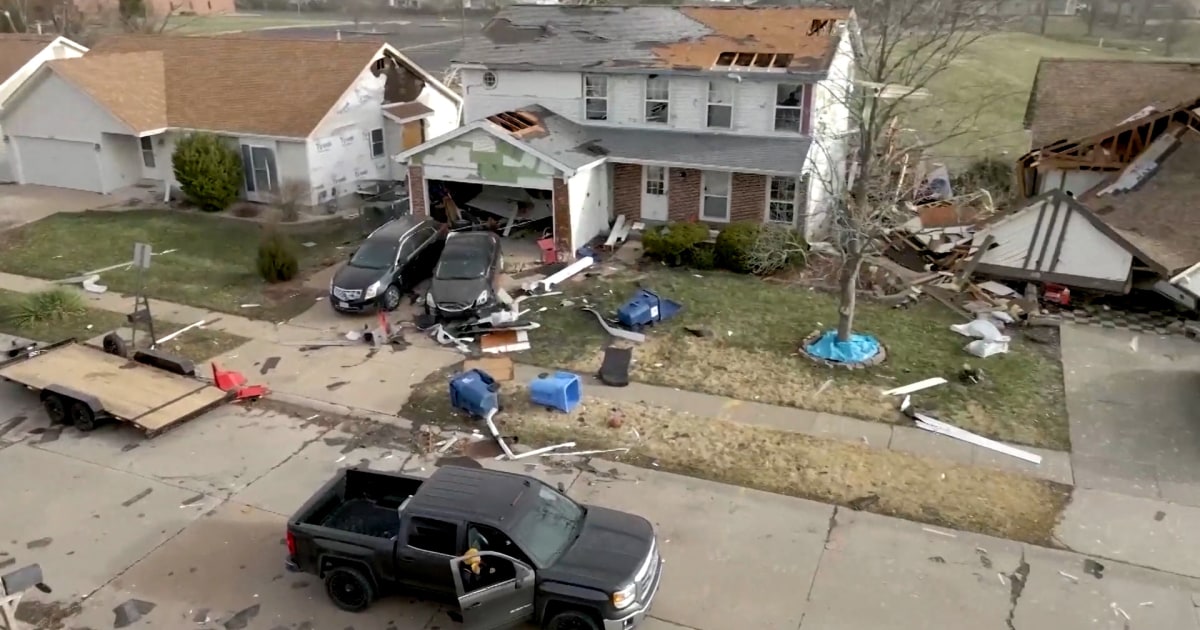Amidst the Fury: Unpacking the Aftermath of Recent Tornadoes and Storms
Recent deadly storms and tornadoes have wreaked havoc across multiple states, leaving communities grappling with extensive damage and loss. As recovery efforts begin, experts analyze the storm patterns and their implications for future weather events. The aftermath of these natural disasters is not only a testament to nature’s fury but also highlights the resilience of communities that come together in times of crisis.
The Immediate Impact of the Storms
In the wake of the recent tornadoes, the immediate impact has been devastating. Reports indicate that entire neighborhoods have been flattened, infrastructure has been compromised, and many residents have been displaced. The storms have particularly affected areas in the Midwest and South, where tornadoes are more frequent during certain times of the year.
- Destruction of Property: Homes, schools, and businesses have been destroyed, leading to significant economic losses.
- Injuries and Fatalities: Tragically, many lives have been lost, and countless individuals have sustained injuries that will require long-term care.
- Displacement: Thousands have been forced to evacuate their homes, seeking shelter in temporary accommodations or with family and friends.
The emotional toll of such disasters is profound. Survivors often experience a range of feelings from shock to grief, as they come to terms with the loss of their homes and communities. Local mental health services have begun to mobilize to support those affected, emphasizing the importance of psychological care in the recovery process.
Understanding Storm Patterns and Climate Change
As meteorologists analyze the recent storms, it’s crucial to understand how climate change is influencing weather patterns. The frequency and intensity of tornadoes and severe storms appear to be increasing, raising questions about the future of weather in the United States.
Shifts in Weather Patterns
Research suggests that warmer temperatures lead to more moisture in the atmosphere, which can fuel severe storms. This phenomenon can result in:
- Increased Tornado Activity: Areas that were once considered safe may now experience more frequent tornado occurrences.
- Longer Storm Seasons: The traditional storm season may extend, leading to a greater number of severe weather events throughout the year.
- Enhanced Storm Severity: With more moisture available, storms can become more intense, resulting in greater destruction.
Experts emphasize the need for comprehensive studies to further understand these changing patterns. By analyzing past events and using advanced modeling techniques, meteorologists can better prepare communities for future storms.
Recovery Efforts: Rebuilding Lives and Communities
As the dust settles, recovery efforts are underway. Local, state, and federal agencies are collaborating to provide immediate assistance, while non-profit organizations are stepping up to help affected families rebuild their lives.
Emergency Response and Aid
In the immediate aftermath, emergency services are critical. First responders, including firefighters and paramedics, risk their lives to save others. Additionally, federal aid is often mobilized through:
- FEMA Assistance: The Federal Emergency Management Agency provides financial assistance to individuals and communities affected by disasters.
- Local Shelters: Temporary shelters are established to provide displaced families with safe accommodations.
- Community Support: Local organizations often coordinate food and supply drives, offering essential resources to those in need.
These efforts, while crucial, are only the beginning of a long recovery process. Rebuilding homes and infrastructure can take years, and the emotional wounds inflicted by such disasters often linger far longer.
Long-Term Resilience Planning
Looking ahead, it’s essential for communities to not only recover but to also build resilience against future storms. This can be achieved through various strategies:
- Improved Infrastructure: Investing in stronger buildings and better infrastructure can help mitigate damage during future storms.
- Community Awareness Programs: Educating the public on storm preparedness and emergency response can save lives.
- Climate Adaptation Strategies: Communities need to adapt to changing weather patterns by implementing sustainable practices that reduce vulnerability to extreme weather.
Moreover, collaboration between scientists, city planners, and local governments is vital to create effective long-term strategies. By pooling resources and knowledge, communities can forge a path towards greater resilience.
Personal Stories of Resilience
Amidst all the destruction, there are inspiring stories of resilience and hope. Individuals and families are coming together, demonstrating the strength of the human spirit. For instance:
- Local Heroes: Many residents have opened their homes to those who have lost everything, showcasing the power of community solidarity.
- Volunteer Efforts: Volunteers from neighboring towns and states have traveled to affected areas, offering their time and resources to help with recovery efforts.
- Personal Triumphs: Stories of individuals who have rebuilt their homes or started new businesses in the wake of disaster serve as powerful reminders of human resilience.
These personal narratives not only uplift those affected but also remind us all of the importance of compassion and community support in times of crisis.
Looking Forward: Preparedness is Key
As we reflect on the recent tornadoes and storms, it becomes clear that preparedness is key to minimizing the impact of future disasters. Communities must prioritize:
- Emergency Planning: Developing clear emergency plans that outline evacuation routes and safety protocols can save lives.
- Regular Drills: Conducting regular drills can ensure that residents know how to respond effectively in an emergency.
- Investing in Technology: Utilizing advanced weather tracking technology can provide timely warnings, allowing communities to prepare adequately.
In conclusion, while the aftermath of recent tornadoes and storms has left communities reeling, it has also sparked a collective drive towards resilience and recovery. By learning from these events, improving our preparedness, and fostering community solidarity, we can face future challenges with strength and determination.
See more Your Daily Weather



